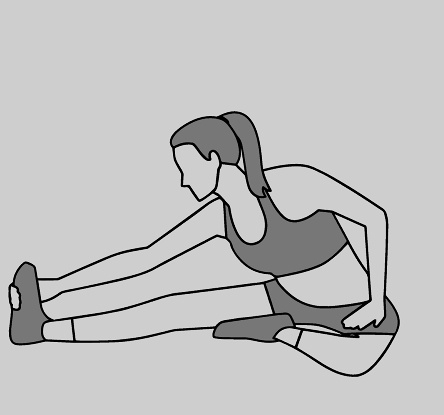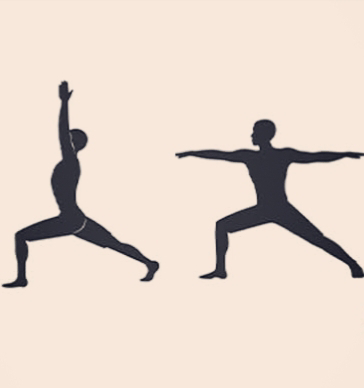Static stretching and dynamic stretching are two common style of stretching used in various fitness and athletic activities. Each type serves different purposes and has distinct effects on the body. In this analysis, we will delve into the characteristics, benefits, and potential drawbacks of both static and dynamic stretching.
**Static Stretching:**
Static stretching involves holding a stretch for an extended period, typically 15-60 seconds, aiming to lengthen and relax the targeted muscles. This form of stretching is often performed after a workout or physical activity when the muscles are warm.
**Characteristics:**
1. **Duration:** Longer hold times distinguish static stretching, promoting an increased range of motion over time.
2. **Intensity:** Gentle and gradual, focusing on stretching without rapid movements.
3. **Application:** Commonly used in cool-down routines after exercise or as part of a flexibility training program.
**Benefits:**
1. **Increased Flexibility:** Regular static stretching can improve flexibility by elongating muscle fibers and connective tissues.
2. **Muscle Relaxation:** Holding stretches allows muscles to relax, reducing tension and promoting a sense of well-being.
3. **Injury Prevention:** Improved flexibility may decrease the risk of injuries related to muscle tightness.
**Drawbacks:**
1. **Temporary Weakening:** Static stretching before a workout may temporarily reduce muscle strength and power.
2. **Potential for Overstretching:** Holding a stretch for too long or applying excessive force may lead to overstretching and injury.
3. **Less Dynamic Warm-up:** Static stretching alone might not be sufficient as a warm-up for certain activities.
**Dynamic Stretching:**
Dynamic stretching involves controlled, active movements through a full range of motion. It is typically performed before a workout or physical activity to prepare the body for more intense movements.
**Characteristics:**
1. **Continuous Movement:** Dynamic stretches involve fluid and controlled motions rather than holding a position.
2. **Functional Patterns:** Mimics movements related to the specific activity or sport.
3. **Speed:** Performed at a controlled and deliberate pace, promoting circulation and warming up the muscles.
**Benefits:**
1. **Improved Circulation:** Dynamic stretching increases blood flow, enhancing oxygen and nutrient delivery to muscles.
2. **Enhanced Mobility:** The active movements promote joint mobility and flexibility tailored to the upcoming activity.
3. **Prepares Muscles for Activity:** Activates the nervous system and muscles, contributing to better performance.
**Drawbacks:**
1. **Less Intense Stretch:** Dynamic stretching may not provide the same intensity of stretch as static stretching.
2. **Requires Focus:** It demands concentration to execute controlled movements, potentially limiting its use for beginners.
3. **Not Ideal for Cool-down:** While great for warm-ups, dynamic stretching might not be the best choice for post-activity stretching.
**Comparative Analysis:**
**Use in Warm-up:**
- **Static Stretching:** Best suited for the cool-down phase as it helps relax muscles post-exercise.
- **Dynamic Stretching:** Ideal for warming up as it activates muscles and prepares the body for dynamic movements.
**Flexibility Improvement:**
- **Static Stretching:** Effective in gradually improving flexibility over time.
- **Dynamic Stretching:** Focuses more on functional flexibility and range of motion specific to the activity.
**Injury Prevention:**
- **Static Stretching:** May reduce injury risk by addressing muscle tightness.
- **Dynamic Stretching:** Helps prevent injuries by enhancing blood flow, joint mobility, and muscle activation.
**Muscle Strength and Power:**
- **Static Stretching:** Pre-workout static stretching might temporarily decrease strength and power.
- **Dynamic Stretching:** Can help maintain or even enhance muscle strength and power when incorporated into a warm-up routine.
**Suitability for Different Activities:**
- **Static Stretching:** More suitable for activities where a broader range of motion is beneficial, such as yoga or gymnastics.
- **Dynamic Stretching:** Particularly beneficial for activities requiring explosive movements, like sprinting or sports involving quick directional changes.
**Conclusion:**
In conclusion, the choice between static and dynamic stretching depends on the context of the activity. Combining both methods strategically, such as dynamic stretching in warm-ups and static stretching in cool-downs, can optimize flexibility, reduce injury risks, and enhance overall performance. Understanding the unique characteristics and benefits of each form of stretching allows individuals to tailor their stretching routines to meet their specific fitness goals and activity requirements.




No comments:
Post a Comment